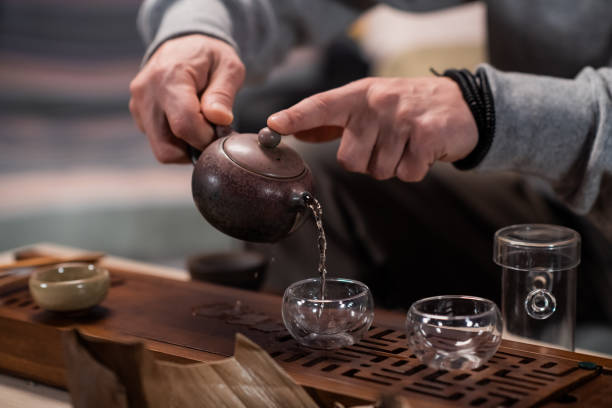Rome/New York, May 20 – United Nations organizations marked the annual International Tea Day for the second year under the coronavirus pandemic.
There are meaningful reasons, however, to celebrate tea as it is the world’s oldest beverage and most consumed drink, after water. Tea is proven for its health benefits on humans, from anti-inflammatory to antioxidant and weight loss effects.
The first International Tea Day happened on May 21, 2020, when the pandemic triggered deep fear and lockdown and the event was held in virtual conditions. The severe health crisis has somehow abated in 2021 in some countries but the overall situation has not changed much and any large gatherings to mark the day have been mostly curtailed.
The UN Food and Agriculture Organization (FAO), which is tasked each year to celebrate the occasion, says the International Tea Day is an opportunity to celebrate tea’s cultural heritage. It says tea also bestows economic income and tea growers have continued to make tea production sustainable “from field to cup.”
The origins of tea drinking is said to have started some 5,000 years ago and the drink has solidly implanted itself in many cultures worldwide.
Tea cultivation and processing are a main source of livelihoods for millions of people and their families from small farms to large producers and stores. Tea is now grown in more than 35 countries. Those countries included China, India, Japan, South Korea, Thailand, Bangladesh, Malaysia, Indonesia, Kenya, Turkey and Vietnam.

The FAO cites important facts about tea. It says tea cultivation demands specific agro-ecological conditions but unfortunately it exists in areas that are highly vulnerable to climate change. The FAO says the tea value chain must be sustainable at all stages of production and processing in order to ensure benefits for both people and the environment.
The FAO said small tea farms are responsible for 60 per cent of the world’s annual tea production worth over US$16 billion.
The FAO has most recently designated four tea cultivation sites as Globally Important Agricultural Heritage Systems. Those sites represent “evolving systems of human communities in an intricate relationship with their territory, cultural and agricultural landscape.”
The four sites are situated in Yunnan and Fujian provinces in China, in Hadong region in South Korea and in Shizuoka prefecture in Japan.
Luo Daoyu, dean of China Tea Culture Study Institute, said China’s tea culture originated in the Yunnan and Sichuan provinces more than 5,000 years ago and bloomed during the Tang and Song dynasties.
The International Tea Day is a “beneficial resolution for the welfare of all mankind. We look forward to see the improvement of global health by improving the awareness of drinking tea appropriately through the international commemoration,” he said.
“Our world today is facing rising pollution of air quality, food and the environment,” he said. “Drinking tea correctly improves people’s health. There is a Chinese saying that ‘tea cures all toxins.’ We are profoundly glad that the tea culture can be spread and promoted in a largescale worldwide
In Japan, the habit of tea drinking originated from China and has developed into a culture called Sado, also known as the Japanese tea ceremony. Sado emphasizes not only brewing a delicious cup of tea, but the spiritual exchange between the host and the guests.
The host of the tea ceremony begins by setting up the garden, hanging art scrolls, preparing mizusashi, or water jar and tea bowls, in preparation for hospitality. Then, in the small minimalist aesthetic tea room, the host and guests can create bonds with each other with respect, regardless of their social status or title.
The tea ceremony was developed during the Warring States Period more than 400 years ago when many samurais fought against each other in Japan. In contrast to the times of conflict, the tea ceremony, which respects peaceful communication of the hearts, became popular.
Projected growth of tea production, exports by 2027
The FAO’s International Group on Tea, composed of 19 countries, projected a significant increase in production of world black tea such as pu’er by an annual growth rate of 2.2 per cent to reach 4.42 million tons by 2027. China, Kenya and Sri Lanka are major black tea producers.
Major black tea exporting countries are expected to remain the same, with Kenya being the largest exporter followed by India, Sri Lanka, Argentina, Vietnam, Uganda, Tanzania, Rwanda, Malawi, and China.
For green tea, the group projected production output at an even faster rate of 7.5 per cent annually to reach 3.65 million tons. World green tea exports are projected to grow by 5.0 per cent annually to reach 605 455 tons by 2027. China, Vietnam, Indonesia and Japan are leading green tea exporters.
“The expansion is expected to result from increased productivity rather than an expansion in area, through replanting of higher yielding varieties and better agricultural practices,” the group said in a report following its meeting in Hangzhou, China in 2018. “Vietnam is also expected to substantially increase its production of green tea with an average annual growth rate of 6.8 percent despite ongoing quality issues which affect the price and exports earning of the country.”
United Nations correspondent journalists – United Nations correspondent journalists – United Nations correspondent journalists
United Nations journalism articles – United Nations journalism articles – United Nations journalism articles